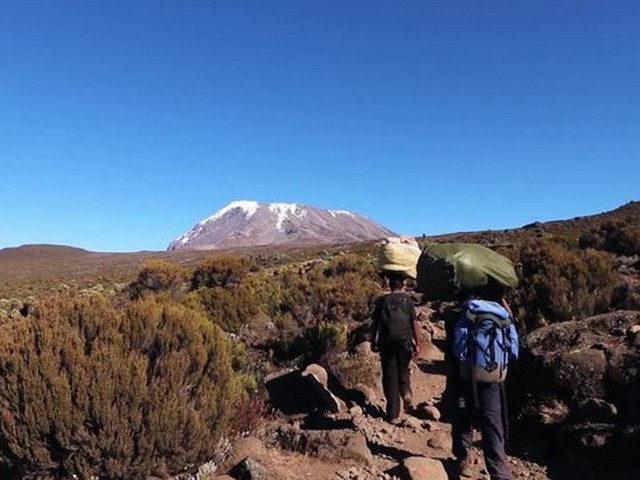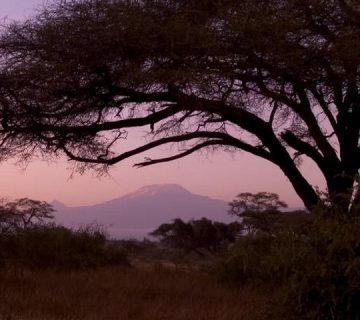Conquering Kilimanjaro: Essential Trekking Gear for Summer and Winter
Embarking on a trek up Mount Kilimanjaro is not just about testing your physical stamina—it’s about immersing yourself in the awe-inspiring beauty of one of the world’s most majestic peaks. Whether you’re planning a summer ascent or braving the colder winds of winter, having the right gear is essential to your success and enjoyment. At Kilimanjaro Centre for Trekking and Ecotourism (KCTE), we understand the importance of preparation. In this detailed guide, we’ll walk you through the essential Kilimanjaro trekking gear for both summer and winter, ensuring you’re well-equipped for the adventure of a lifetime!
Why the Right Gear Matters
Climbing Kilimanjaro is a formidable challenge in any season. The mountain’s diverse climate zones mean you’ll traverse through tropical rainforests, arid plains, and icy summit caps—all in a matter of days. The right gear not only ensures comfort but is critical for your safety. From battling UV rays in the moorlands to withstanding sub-zero temperatures at Uhuru Peak, each piece of your kit serves a purpose.
Summer Trekking Essentials: Facing the Heat
Summer on Kilimanjaro, typically from June to October, is drier but not devoid of the mountain’s notorious temperature fluctuations. Here’s what you should pack:
Clothing: Layer Like a Pro
- Base Layers: Opt for moisture-wicking materials to keep you dry and comfortable. Think lightweight and breathable.
- Insulating Layers: Even in summer, nights can be chilly. Pack a fleece or down jacket.
- Outer Shell: A waterproof and breathable jacket and pants are a must to shield you from sudden downpours or high winds.
Footwear: Your Foundation
- Hiking Boots: Choose well-fitting, broken-in boots with good ankle support and a rugged sole.
- Socks: Bring several pairs of moisture-wicking socks and a few for warmth to prevent blisters and keep feet dry.
Headgear and Gloves
- Sun Hat: Protect yourself from direct sunlight with a wide-brimmed hat.
- Light Gloves: For cool mornings and evenings, lightweight gloves are sufficient.
Miscellaneous Gear
- Sunglasses and Sunscreen: Essential for protecting against harsh UV rays.
- Hydration System: Staying hydrated is crucial; a hydration bladder or water bottles are a must.
Winter Trekking Gear: Bracing the Cold
Trekking from November to March brings colder temperatures. These winter climbs require additional gear to combat frosty conditions.
Enhanced Clothing Options
- Thermal Base Layers: Swap lightweight base layers for thermal ones to retain body heat.
- Additional Insulation: Pack an extra mid-layer, such as a heavier fleece or a synthetic down jacket.
- Outer Protection: Ensure your jacket and pants are not only waterproof but also insulated.
Sturdy Footwear and Warm Socks
- Insulated Boots: Consider boots with additional insulation if prone to cold feet.
- Thermal Socks: Wool or thermal socks are necessary to keep your feet warm.
Protective Headgear and Gloves
- Beanie or Balaclava: A warm hat or a balaclava helps preserve body heat.
- Insulated Gloves: Upgrade to insulated, waterproof gloves for higher altitudes.
Essential Winter Accessories
- Gaiters: Helpful for keeping snow and debris out of your boots.
- Thermal Flask: Keeps liquids from freezing and ensures you have warm drinks available.
Year-Round Gear Recommendations
Certain items are indispensable regardless of the season. Here are a few:
- Backpack: A durable, 30-40 liter pack with comfortable straps.
- Sleeping Bag: Rated to at least -10 degrees Celsius, suited for the freezing temperatures of high altitude.
- Headlamp: With extra batteries, crucial for night movements, especially during your summit bid.
- Trekking Poles: Reduce knee strain and assist balance on uneven terrains.
Health and Safety: The Non-Negotiables
- First Aid Kit: Include altitude sickness medication, plasters, and essentials.
- Navigation Tools: Although you’ll be with guides from KCTE, a compass or GPS can add a layer of safety.
- Emergency Whistle and Mirror: For attracting attention in emergencies.
The KCTE Advantage: Why Book With Us?
At Kilimanjaro Centre for Trekking and Ecotourism, we are dedicated to providing you with not just a trek but an unforgettable journey steeped in Tanzanian hospitality and rich cultural heritage. Our experienced guides and porters are Kilimanjaro experts, trained to ensure your safety and comfort throughout the climb. Booking your Kilimanjaro adventure with KCTE means choosing a partner who values sustainability and the preservation of this mighty mountain’s ecosystems.
FAQs About Kilimanjaro Trekking Gear
Q: Can the same gear be used for both summer and winter climbs?
A: While some gear can be used year-round, seasonal items like insulated clothing or lighter base layers are specific to the expected weather conditions.
Q: How important is it to break in trekking boots before the climb?
A: Extremely important. Breaking in your boots prevents blisters and discomfort during the climb.
Q: Are rental gear options available?
A: Yes, KCTE offers high-quality rental options for major gear items, though personal fit items like boots should ideally be your own.
Q: What is the most common mistake climbers make when choosing gear?
A: Underestimating the cold is a common error—especially for winter climbs. Always opt for slightly warmer and more protective gear than you think you might need.
Ready for the Roof of Africa?
Preparing the right gear is the first step in your Kilimanjaro adventure. Whether you choose a summer hike or a winter ascent, Kilimanjaro Centre for Trekking and Ecotourism is here to guide you every step of the way. Visit us at KCTE to find out more about our tailored treks and to secure your spot on an unforgettable journey. Climb with confidence, embrace the elements, and let the magic of Kilimanjaro change you forever!
Remember, the mountain calls not just for your strength, but for your spirit. Gear up with KCTE, and let’s make your Kilimanjaro dream a breathtaking reality!




